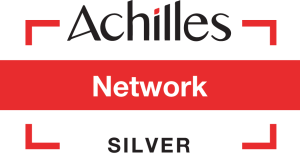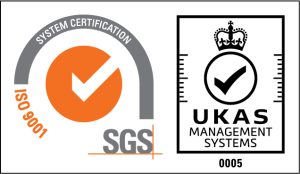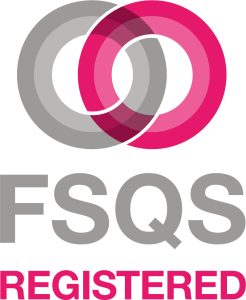
Top 10 Ways to Utilise Splunk Observability
Author: Riley Martin
Release Date: 07/05/2024
I.T. is getting more and more complex. Every day more websites are launching, more customers are looking for the next thing in their lives, and more code is being pushed to update systems. Is it any wonder that industries are experiencing more and more unexpected downtime which can cost around $5,600 per minute a system is down; with some companies calculating upwards of 800 hours of downtime every year.
With complexity comes the need to monitor and observe your systems closer than ever to be ready for anything that might come your way. So with that in mind,
What is Observability?
Observability is all the methods and tools that you could and would use to monitor your system. Looking particularly at any outputs, logs, and performance metrics so you can understand the state of your system or app and ensure that it is running as expected. Without observability features in your environment it would be similar to firing blind with no knowledge of what is and isn’t working until it breaks and you are left having to pick up the pieces, not knowing what it was that went wrong in the first place.
You Might Also Like:
How to Utilise Splunk Observability
There are many tools in the Splunk Observability Stack and many ways you can utilise them to better your environment and the day to day use of it.
1. Make Sense of the Complexity
Organisations can be complex, with environments linking to other dependencies and information from one aspect of the company to another. Making sense of the web of your environment can be a key feature of Splunk O11y; using Application Performance Monitoring to not only troubleshoot and optimise your organisation but make sense of the organisational web through Distributed Tracing tools in APM.
2. Detect Hard to Catch Problems
Problems will alway rear their heads in nearly any environment; but catching and detecting them before they do too much damage so they can be fixed is the key to having a safe and working environment. With monitoring tools and alerts built into Splunk O11y; you can be sure to know the problems, if they arise, when they arise, so they can be dealt with no matter where the error may take place.
3. Speed up Troubleshooting, Reducing MTTI, MTTA and MTTR
MTTI (Mean Time to Identify), MTTA (Mean Time to Acknowledge), and MTTR (Mean time to Resolve/Respond) are all key factors in knowing how quickly you can fix issues but if you don’t know what the issues are or where they are located then the troubleshooting process can take just as long if not longer than the amount of time it takes to just solve it. As such; using Splunk’s O11y tools to detect and troubleshoot the issues to reduce solving time down to a minimum.
4. Reduce Alert Fatigue
Alerts are key to make sure you are aware of both the good and bad within your environment. However, having too many can result in things being lost amongst clear all notifications sweeps or mark all as read for an inbox that’s too big. As such you can make different alert severities and dynamic alerting to ensure that while everything is being picked up and analysed; only the things you need to know are alerted when they occur; as well as the abilities to set muting rules to dismiss alerts that may come in but are not relevant or you are already aware of.
5. Help to Improve User Experience
A tool is only as useful as people are willing to use it. As such, Splunk O11y is designed to be user friendly and improve the user experience of all involved from developers and system admins; to the end users who may not even see the O11y systems in place; but through the observability tools they are able to have a smooth experience and keep using your system with any downtime fixed quickly and smoothly thanks to O11y’s tools helping developers.
6. Increase Automation
Some of the largest bottlenecks in industry are Manual data processing and Outdated workflows with the lack of automation in many aspects of observability. Splunk O11y’s tools are able to increase automation of tasks with data not needing to be manually uploaded or processed, and analysis happening on your data all the time based on parameters you set, and alert you when things go right or wrong based on detectors you can put in place. All of these are simple to introduce to your O11y environment to increase the automation of Observability so you can focus more on the day to day running of your business.
7. Reduce Time to Market
Time to Market is the total length of time it takes to bring a product from conception to market availability. Reducing it is almost always good for business and so speeding up processes where possible is a key factor in the modern day. Bringing your processes together into the one tool of Splunk Observability cn give your teams the real-time views of the health of all your systems at once so when development occurs you can be sure of any changes across your environment as they happen and ultimately speed up Time to Market
8. Help to Reduce Costs
Consolidating all your observability tools into the highly effective Splunk O11y stack can mean an overall cost reduction based on base tools; however the big cost reduction would be from day to day usage where downtime can be reduced, errors can be fixed quickly, and environmental improvements can be made reducing cost and increasing productivity meaning more money saved in the long run.
9. Increase Productivity of Developers
As previously stated; bottlenecks in your organisation can slow down development to a crawl; as such providing all the tools for observability in one place with quick, efficient, and easy to use systems can enhance development and productivity in your developers making their lives not only easier but also being able to do more in their days making the whole environment and company more productive.
10. Answer any Question you have about your Systems
By giving full access to your environment and opening up all the nooks and crannies you can see basically whatever you want in your systems both demystifying it and being able to analyse it whenever, and almost however you want with the Splunk O11y tools being able to answer your questions and enhance your productivity 24 hours a day, 7 days a week.
With all of these ways to utilise Splunk Observability, is it any wonder that companies across the globe trust Splunk with their observability journey to better their organisation.







